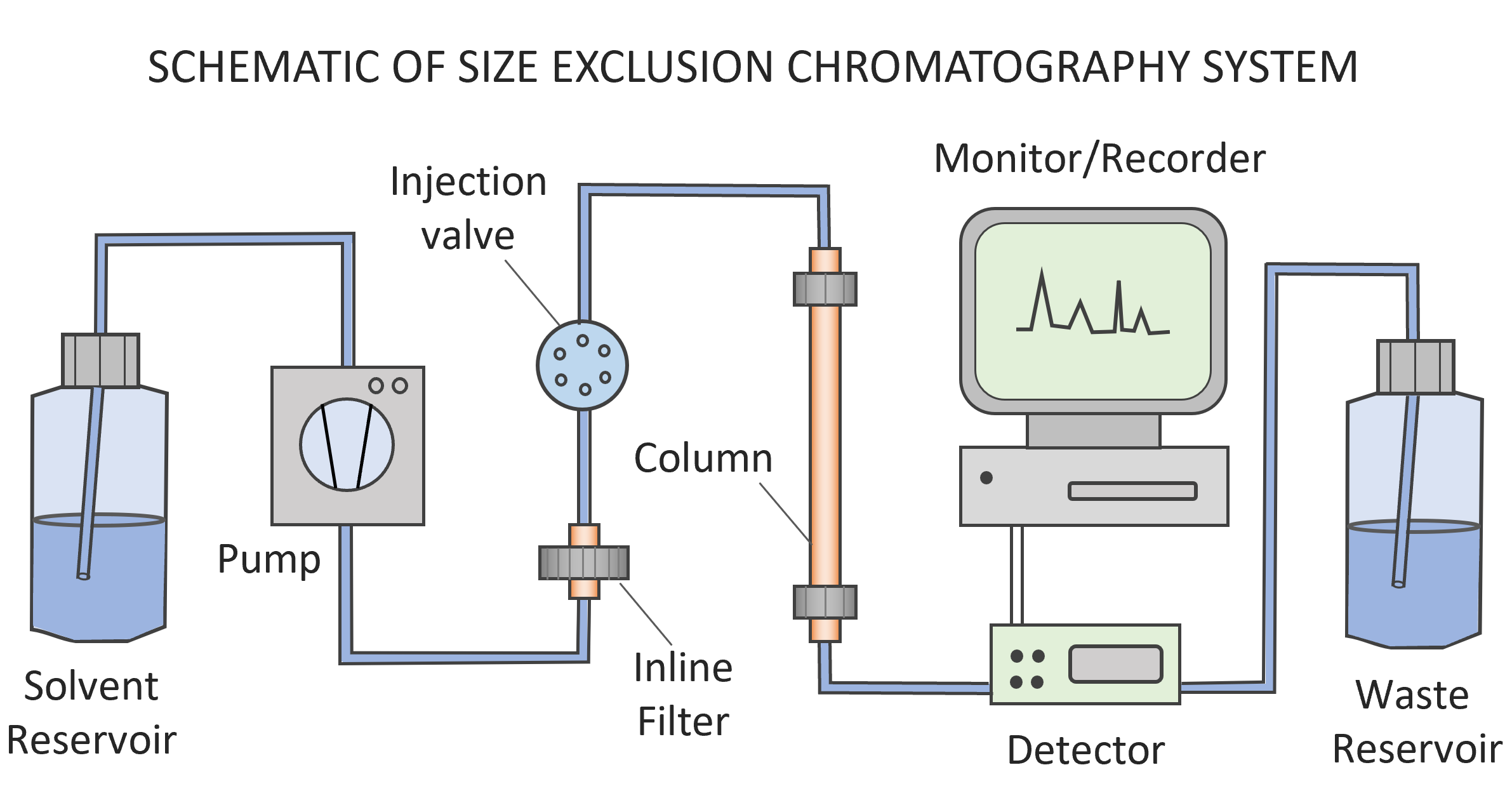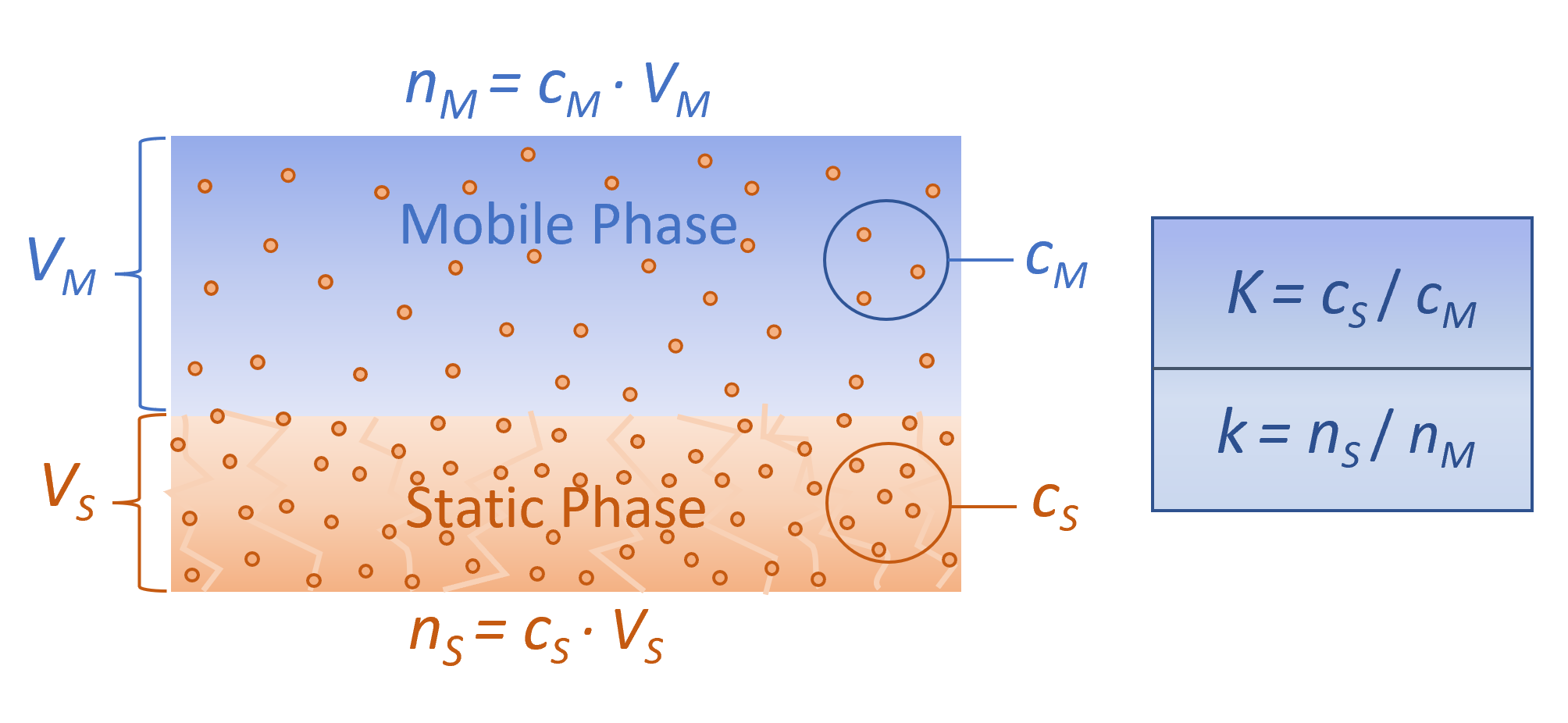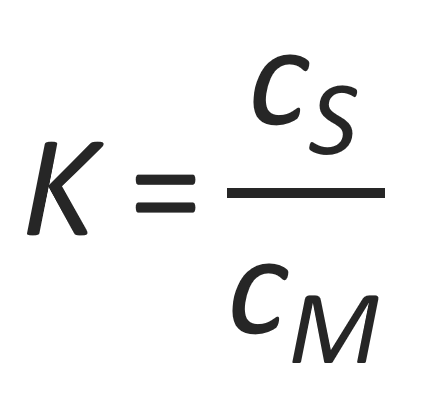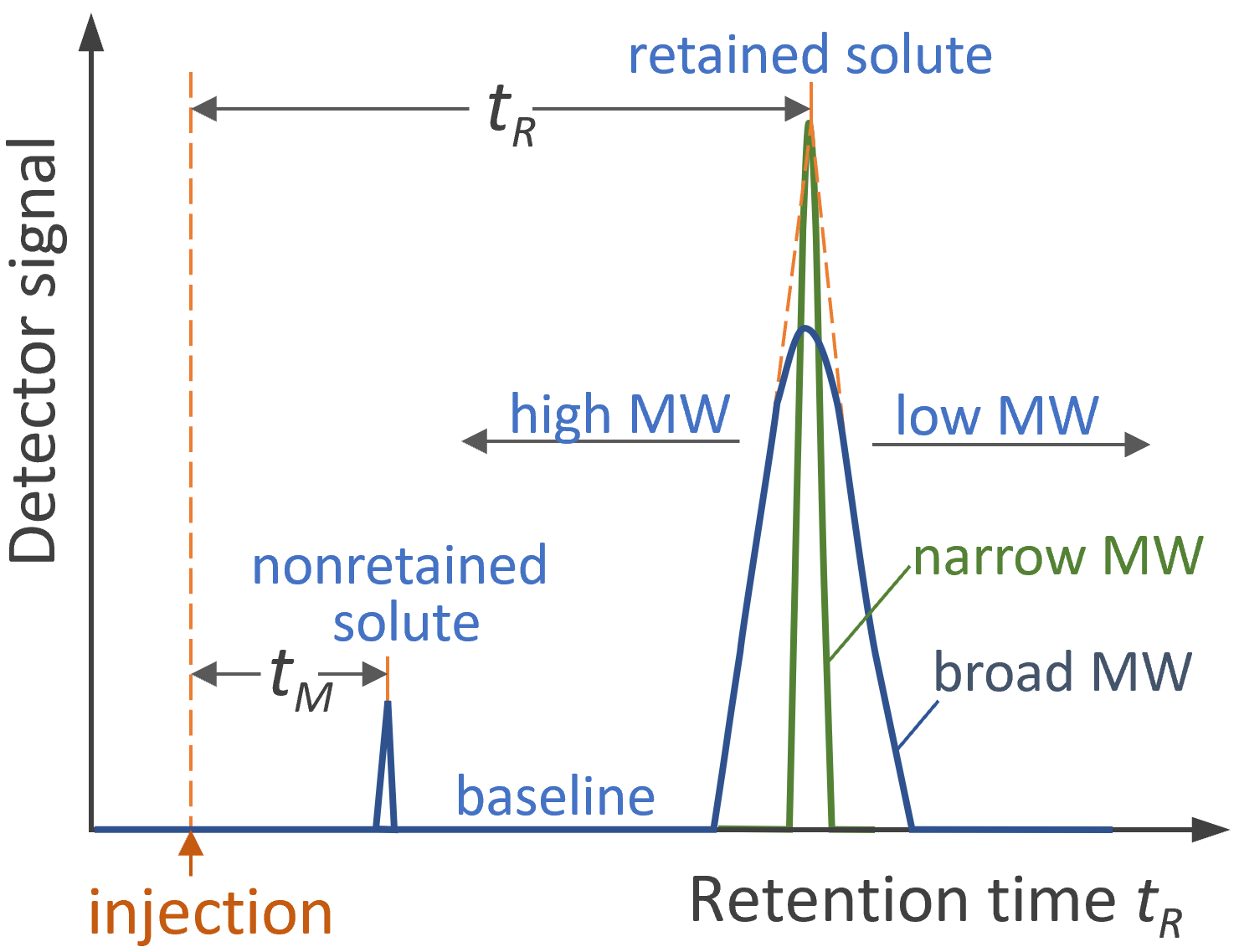Size Exclusion Chromatography
Size exclusion chromatography (SEC), also called gel permeation chromatography, is a special mode of high-pressure liquid chromatography (HPLC) that employs porous particles in a column to separate molecules (solute) of different size in solution. It is by far the most popular high throughput method for molecular weight determination of polymers. The method is also widely used to purify polymeric samples and to separate various (natural) polymers. It is relatively cheap, fast, reliable and requires only small sample volumes.
A SEC separation system is schematically shown in the figure below. A high-pressure pump draws solvent (mobile phase) from a reservoir and pumps it into one or more separation columns that are packed with a porous material (stationary phase). After the detector records a stable baseline signal at a constant flow rate, a defined volume of a polymer solution is injected into the mobile phase from a sample port. A detector with a flow cell records the amount of eluent and the concentration (mass/volume) of macromolecules in it.
Common measurement parameters include scattered light, molecular viscosity and the adsorption in the ultraviolet (UV) and infrared (IR) range. The detectors can be divided into those that measure concentration alone, such as differential refractive index (DRI), and those that measure a certain property of the polymer, such as its static light scattering signal that is proportional to the sample concentration. The most common GPC detectors are differential refractive index (DRI) detectors which measure the difference in refractive index between the elute and the pure solvent.1 They are sometimes referred to as ‘universal’ detectors because they can be employed for all types of macromolecules.

The liquid that is eluted from the column is called the eluent. The time to elute the entire sample volume from the column at a given flow rate will depend on the porosity and pore size (distribution) of the stationary phase as well as the column dimension.
The time a molecule requires to travel through the column depends on the hydrodynamic size and the shape of the macromolecules relative to the size and shape of the pores of the stationary phase. Smaller macromolecules are retained in the pores longer than larger macromolecules. As a result, molecules with a larger hydrodynamic volume elute from the column faster than smaller molecules. The volume of liquid at which a solute elutes from the column (cumulative volume of the fluid out of the column) is called the retention volume (VR). It depends on the physical parameters of the separation column such as its length, interstitial or void volume (V0) and volume of stationary phase (VI).

The separation is based on the continuous size-depending molecule partitioning between the stationary and mobile phase. This is due to the solute bands continually and recurrently permeating in and out of the pores of the stationary phase as the solute bands travel along with the solvent down the separation column. To explain the separation process and the band broadening during the flow of polymer molecules through the column, we assume that the transfer of polymers between the stationary and mobile phase is very fast so that it reaches a dynamic equilibrium immediately. Then the ratio of concentration in the stationary phase (cS) and mobile phase (cM) is a constant throughout the column, called the partition coefficient:

When the concentration is sufficiently low (cM << c*, overlap concentration), the partition coefficient will be independent of the concentration of polymers in the mobile phase. K then depends solely on the ratio of the chain dimension to the pore size. The true partitioning, i.e., the ratio of the number of molecules between the two phases is called the partition ratio or retention factor (k). It is a function of both the volume of the two phases and their polymer concentration and can be calculated from the partition coefficient:

With the partition coefficient k the fraction of solute in the mobile phase (xM) can be easily calculated:

This fraction can also be calculated from the average time the molecules spend in each phase. The total average time a molecule spends in the mobile phase is equal to the time a nonretained molecule spends in the column tM, whereas the total time a molecule spends in the stationary phase tS is equal to the retention time tR (time measured from the injection of the polymer to its detection) minus the time spent in the mobile phase. Thus

and

Here we assumed that the retention time tR is directly proportional to the retention volume VR. Similarly, the partition coefficient k is calculated as

When we combine these equations, we obtain1-3

where the volume of the mobile phase VM is assumed to be identical with the interstitial (void) volume V0 and that of the stationary phase VS with the total pore volume VI of the separation column. The equation above teaches that the retention volume VR of a macromolecule can be predicted once its distribution coefficient K along with the void volume V0 and total pore volume of the column VI have been determined.
References, Notes & Further Readings
- T. Provder, An overview of Size Exclusion Chromatography, CoatingsTech, pp. 46-59, April 2021
- H.G. Barth, Early Development of Size-Exclusion Chromatography, LCGC 31, 7, 550-558 (2013)
- J.V. Dawkins, Pure & Appi. Chem. 54, 281 (1982)
- D. Berek, J. Sep. Sci. 33, 315 (2010)
- N. Donkai, A. Nakazawa, H. Inagaki, Bull. Inst. Chem. Res. 48, 79, 1970
- I. Teraoka, Polymer Solutions: An Introduction to Physical Properties, John Wiley (2002)
